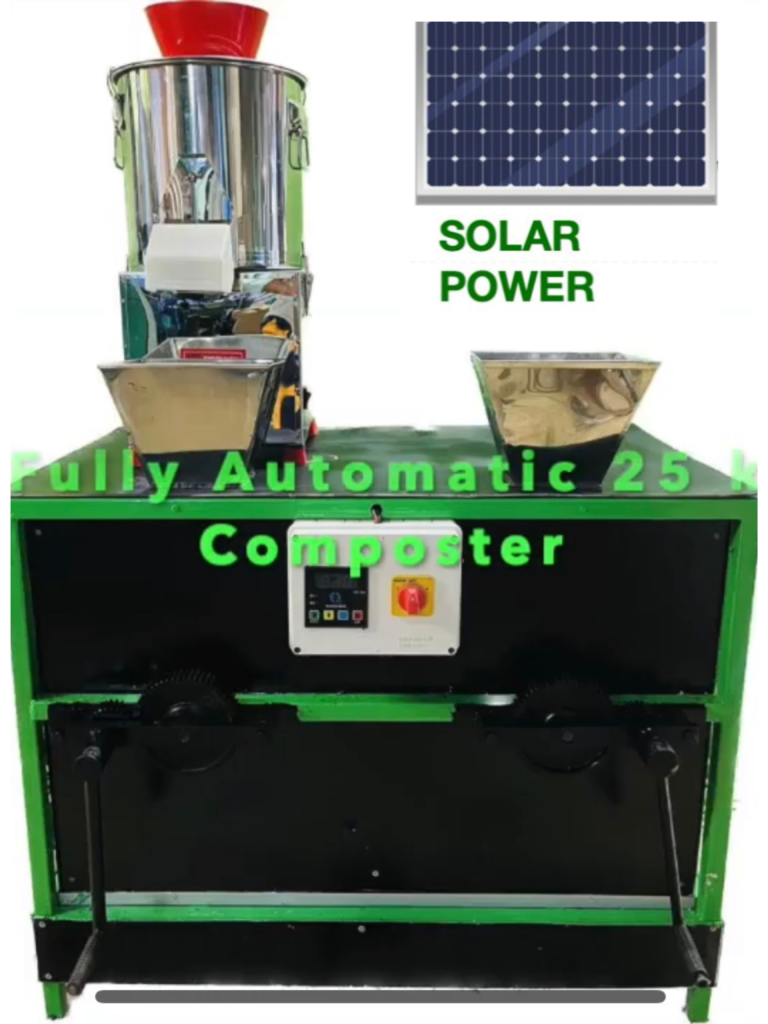
Food waste composting machines:
The garbage crisis facing the planet is concerning. We produce enormous amounts of garbage all around the world, with food waste being one of the most urgent problems. Surprisingly, a third of the food that is produced ends up in landfills where it rots and releases greenhouse gases into the atmosphere. This waste of resources and damage to the environment cannot continue. Thankfully, creative solutions to this issue are starting to surface. At the forefront of this revolution are food waste composting machines, which provide a useful means of minimizing waste, lowering harmful emissions, and creating beneficial compost. We examine how these devices are altering the rules in the battle against waste in this blog article.
Waste can be solid, liquid, or gases and each type has different methods of disposal and management. Waste management deals with all types of waste, including industrial, biological, household, municipal, organic, biomedical, radioactive wastes. In some cases, waste can pose a threat to human health. Health issues are associated with the entire process of waste management. Health issues can also arise indirectly or directly: directly through the handling of solid waste, and indirectly through the consumption of water, soil, and food. Waste is produced by human activity, for example, the extraction and processing of raw materials. Waste management is intended to reduce the adverse effects of waste on human health, the environment, planetary resources, and aesthetics.
Read also: Low Cost Manual Waste Shredder | Guidebest Compost
What is food waste compost machine?

Composting machines for food waste are specialized equipment made to effectively turn organic waste and food scraps into nutrient-rich compost that can be applied to improve soil fertility for farming and gardening. These devices offer a cutting-edge, sustainable, and environmentally responsible way to deal with the expanding issue of food waste.
How Operate:
Food Collection: Users place their food waste—which can include leftovers, eggshells, coffee grinds, and peels from fruits and vegetables—into the machine’s appropriate container.
Microorganism Action: A regulated environment is produced inside the composting machine to aid in the breakdown of organic materials. These devices usually offer the perfect conditions for the growth of microorganisms like fungus and bacteria.
Aeration and Agitation: In order to guarantee that the microorganisms have adequate access to oxygen and organic matter, many composters include devices that aerate and mix the waste on a regular basis. This reduces smells and encourages even decomposition.
Temperature Control: Composting machines for food waste usually keep the temperature between 110°F and 160°F (43°C and 71°C), which is the ideal range for decomposition. This range eliminates possible diseases and pests while hastening the decomposition of organic materials.
Dehydration: A dehydration component in certain machines eliminates extra moisture from the compost, lowering the volume of the finished product.
Compost Maturation: When the decomposing process is finished, the material is ready to be used in gardening or agriculture. It smells deep, dark, and earthy.
Simple Removal: While continuing to add fresh food waste, users may readily reach the completed compost and remove it for application
conclusion:
The waste problem facing the world is concerning. We produce enormous amounts of waste all over the world, with food waste being one of the most urgent problems. Surprisingly, a third of the food that is produced ends up in landfills where it rots and releases greenhouse gases into the atmosphere. This waste of resources and damage to the environment cannot continue. Thankfully, creative solutions to this issue are starting to surface. At the forefront of this revolution are food waste composting machines, which provide a useful means of minimizing waste, lowering harmful emissions, and creating valuable compost. We examine how these devices are altering the rules in the battle against waste in this blog post.
for more information you can visit: www.klimrus.in